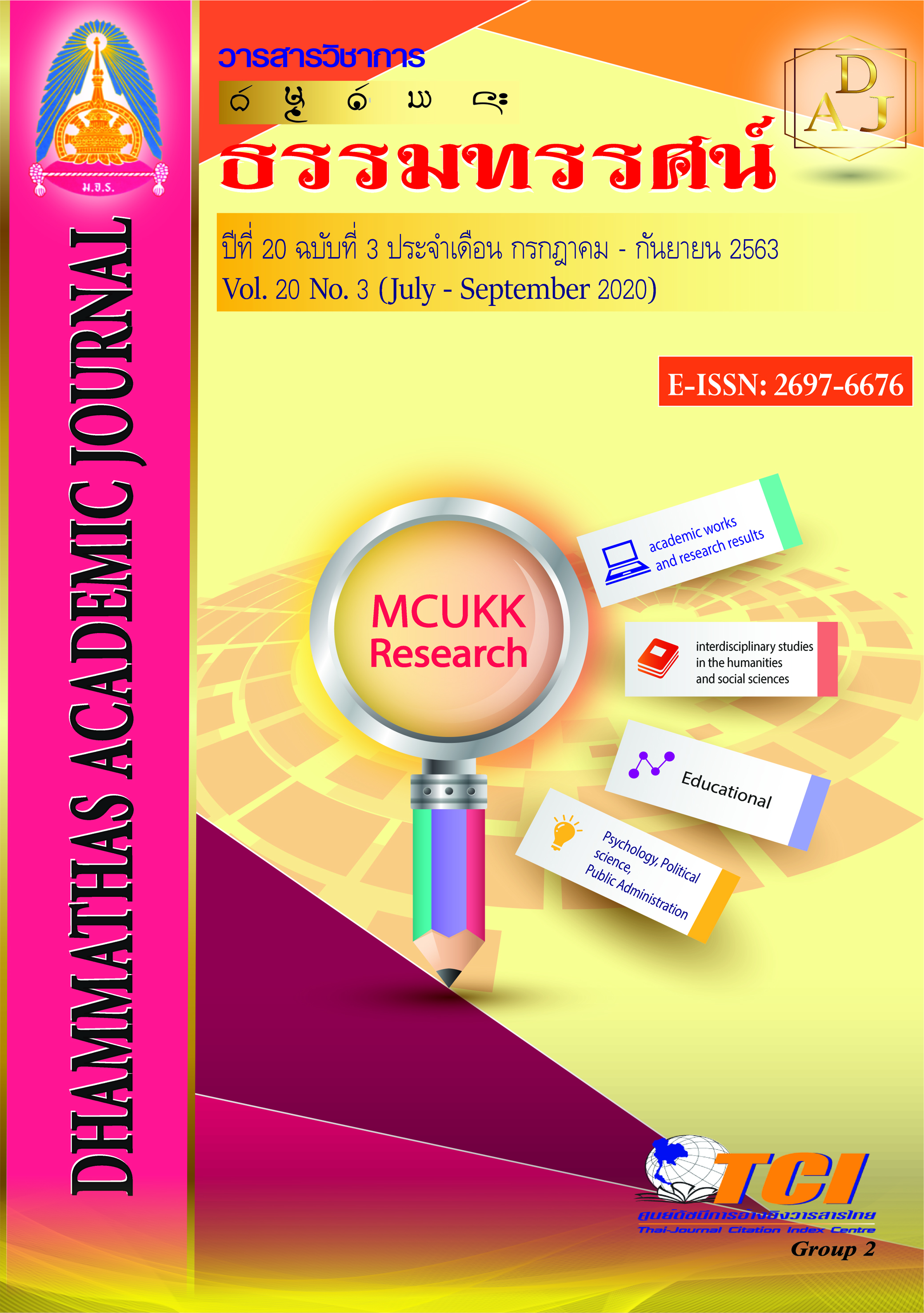The Vision of The Educational Administrators in the Dutiyapapanika Sutra of The Pariyattidhamma School General Education Sakon Nakhon Province
Main Article Content
Abstract
The aims of this research were: 1) to study the vision of the educational Administrators in the Pariyattidhamma Schools Dutiyapāpaṇika Sutta of the Pariyattidhamma Schools, General Education, under Sakon Nakhon Buddhist National Office, 2) to compare the samples’ opinion towards the educational institute administration and 3) to study the ways to develop the vision of the educational administrators according to the Dhammas in the Dutiyapāpaṇika Sutta. The research samples were 105 of the administrators and teachers in the Pariyattidhamma schools. The study was carried out by the means of mixed method research. For the qualitative research, the interview form was used as a tool; for the quantitative one, a questionnaire was used to find the data. The statistics used in this research were: frequency, percentage, mean, standard deviation, t-test, f-test; the data were analyzed and synthesized to find the suggestions.
The research results were as follows:
1. The statistic scores (both overall score and each aspect’s score) of the educational administrators in the Dutiyapāpaṇika Sutta of the Pariyattidhamma Schools, General Education, under Sakon Nakhon Buddhist National Office were at a high level.
2. The comparative statistic scores (both overall score and each aspect’s score) of the educational administrators in the Dutiyapāpaṇika Sutta of the Pariyattidhamma Schools, General Education, under Sakon Nakhon Buddhist National Office were indifferent.
3. The ways to develop the vision of the educational administrators according to the dhammas in the Dutiyapāpaṇika Sutta were that 1) ‘Cakkhumā aspect’: there should be an operative plan according to the policies with long term and creative vision; 2) ‘Vidhuro aspect’: the public benefits occurred by good educational administration should be considered and personnel management in line with their capacity and suitability should be made; 3) ‘Nissayasampanno aspect’: human relations with colleagues, awareness and understanding of the personnel potentials in the organizations should be raised.
Article Details
References
Chayawattana, K. (2011). personnel management and work by means of the Lord Buddha. Bangkok : Pimdee Printing Company Limited.
Klanprasert, S. (2010). Administrative Leadership By applying according to the principle of Sappurisadhamma 7: Case Study of True Corporation Public Company Limited. Buddhist Thesis Master's Degree. Graduate School : Mahachulalongkornrajavidyalaya University.
Phra Thammakosajarn. (2017). Nittayasarn Manager, opens the Tri Sutra for executives to use the principles for success. http://info.gotomanager.com/-news/printnews.aspx?id=70732 (Accessed 6 September 2017).
Saengthongdee, T. (2018). Buddhist Leadership Characteristics. Bangkok : n.p.

